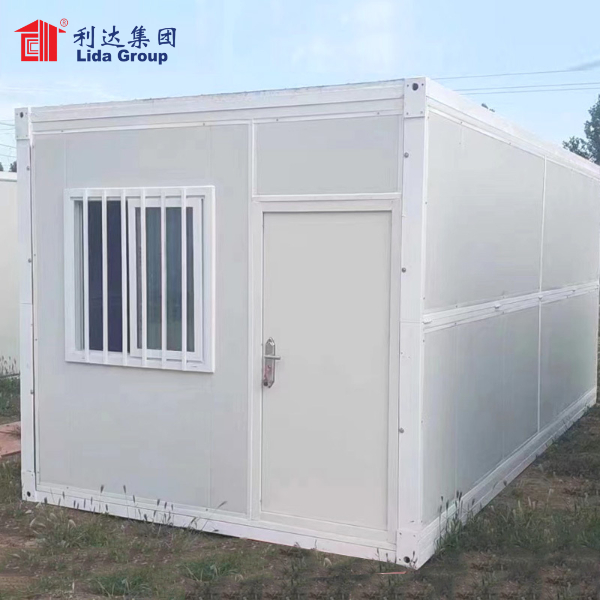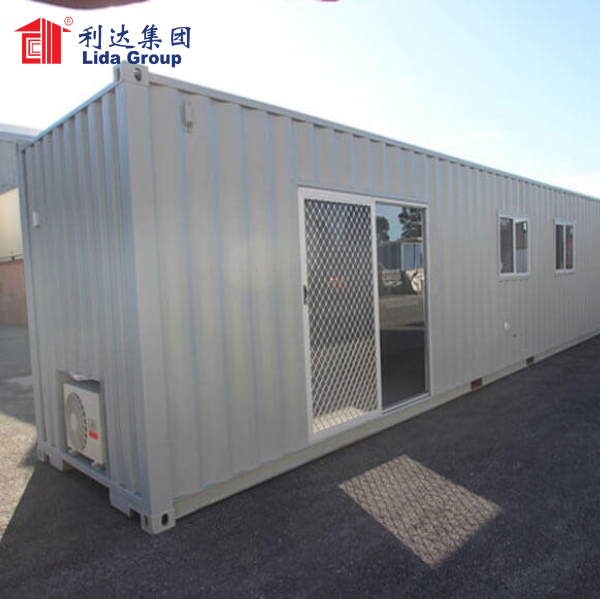Introduction
In an era where sustainability and environmental consciousness are pivotal, the concept of eco-friendly living is gaining traction. Among the innovative solutions addressing housing needs while promoting sustainability, container houses have emerged as a viable option. These structures, made from repurposed shipping containers, offer a unique blend of affordability, durability, and ecological benefits. This article explores the evolution of container houses, their benefits, design possibilities, and their potential role in the future of sustainable living.
The Evolution of Container Houses
1. Origins of Container Architecture
Shipping containers have been used for decades to transport goods across the globe. However, their application in architecture began to gain popularity in the early 2000s. Architects and builders started to recognize the potential of these metal boxes as building materials, leading to the creation of container homes.
2. Growth in Popularity
The rise of container houses can be attributed to several factors, including:
- Affordability: With the housing market becoming increasingly expensive, container houses offer a cost-effective alternative.
- Sustainability: The environmental impact of traditional construction methods has led many to seek greener solutions.
- Modularity: The modular nature of shipping containers allows for flexible designs and easy expansion.
Benefits of Container Houses
1. Environmental Impact
Container houses are inherently eco-friendly. They repurpose materials that would otherwise contribute to landfill waste. By utilizing existing resources, these homes minimize the demand for new construction materials, significantly reducing the carbon footprint associated with traditional building practices.
a. Reduced Material Waste
Using repurposed containers means less waste is generated during the construction process. This approach aligns with the principles of recycling and upcycling, contributing to a circular economy.
b. Energy Efficiency
Container homes can be designed with energy-efficient features such as solar panels, high-quality insulation, and energy-efficient appliances. These elements significantly reduce energy consumption, promoting sustainable living.
2. Cost-Effectiveness
Container houses offer a more affordable housing solution compared to traditional homes. The cost savings arise from:
- Lower Initial Investment: Purchasing used shipping containers is often cheaper than buying traditional building materials.
- Reduced Construction Time: The modular design allows for quicker assembly, leading to lower labor costs.
3. Durability and Strength
Shipping containers are designed to withstand harsh conditions at sea, which makes them incredibly durable. They are resistant to pests, mold, and extreme weather conditions, ensuring a long lifespan for container homes.
4. Flexibility and Customization
Container houses can be customized to meet individual needs and preferences. Homeowners can choose from various layouts, finishes, and designs, allowing for a personalized living space.
5. Mobility
One of the defining characteristics of container homes is their mobility. Homeowners can relocate their houses as needed, making container living an excellent option for those seeking a transient lifestyle or those in remote areas.
Design Possibilities
1. Modular Design
Container houses can be stacked or arranged in various configurations to create unique designs. This modular approach allows for creative architectural solutions that maximize space and functionality.
2. Interior Spaces
The interior of container homes can be designed to be open and spacious. Interior walls can be added or removed to create different room layouts. With proper insulation and ventilation, these homes can provide a comfortable living environment.
3. Outdoor Spaces
Container houses can easily incorporate outdoor elements such as decks, patios, and gardens. This integration of indoor and outdoor spaces enhances the living experience and promotes a connection with nature.
4. Sustainable Features
Many container homes include sustainable features such as:
- Green Roofs: Planting vegetation on the roof can improve insulation and promote biodiversity.
- Rainwater Harvesting Systems: Collecting rainwater for reuse can significantly reduce water consumption.
- Solar Energy Systems: Incorporating solar panels can provide renewable energy, reducing reliance on non-renewable sources.
Challenges of Container Living
While container houses offer numerous benefits, there are challenges that potential homeowners should consider.
1. Zoning Regulations
Building codes and zoning regulations can vary significantly by location. Some areas may have restrictions on the use of shipping containers as homes. It’s essential to research local regulations before starting a project.
2. Insulation and Climate Control
Shipping containers are made of metal, which can lead to extreme temperatures inside. Proper insulation is crucial to maintain a comfortable living environment. Homeowners must invest in quality insulation materials and climate control systems.
3. Financing and Insurance
Financing a container home can be more complex than traditional homes. Many lenders are unfamiliar with container houses, making it challenging to secure a mortgage. Additionally, finding insurance coverage may require additional effort.
4. Limited Space
While container houses can be spacious, they still have limitations compared to traditional homes. Homeowners must be mindful of space constraints and design their interiors accordingly.
Case Studies of Successful Container Houses
1. The Kasita
The Kasita is a modern container home designed for urban living. It features a compact layout with a focus on maximizing space efficiency. Equipped with smart home technology and sustainable features, the Kasita exemplifies the future of eco-friendly living.
2. The Container House in Mexico
This stunning container home in Mexico showcases the versatility of container architecture. With multiple containers stacked to create a multi-level living space, the design integrates natural elements and promotes outdoor living.
3. Container Homes in the United States
Various container home projects across the U.S. highlight the adaptability of this building method. From single-family homes to community housing projects, container houses are being used to address housing shortages and promote sustainable living.
The Future of Container Houses
1. Increasing Popularity
As awareness of environmental issues grows, more people are seeking sustainable housing options. Container houses are likely to become increasingly popular as individuals and families look for eco-friendly living solutions.
2. Innovations in Design and Technology
Advancements in design and building technology will continue to enhance container homes. Innovations such as 3D printing and improved insulation materials will make container living more accessible and comfortable.
3. Community Developments
The concept of container communities is gaining traction. These developments consist of multiple container homes clustered together, promoting a sense of community while adhering to sustainable living principles. Such projects can address affordable housing shortages in urban areas.
4. Global Applications
Container houses are not limited to specific regions; they can be adapted to various climates and cultures. This global applicability makes them a versatile solution for housing needs worldwide.
Conclusion
Container houses represent a forward-thinking approach to eco-friendly living. Their benefits, including affordability, sustainability, and design flexibility, position them as a viable alternative to traditional housing. As the world continues to grapple with environmental challenges, innovative solutions like container homes will play a crucial role in shaping the future of sustainable living.
By embracing the potential of container architecture, we can pave the way for a more sustainable and eco-conscious future, ensuring that our living spaces resonate with the values of environmental stewardship and community. As this trend continues to evolve, container houses may well become a cornerstone of modern housing solutions, reflecting a commitment to both innovation and sustainability.
Contact Us
Post time: Sep-12-2024


